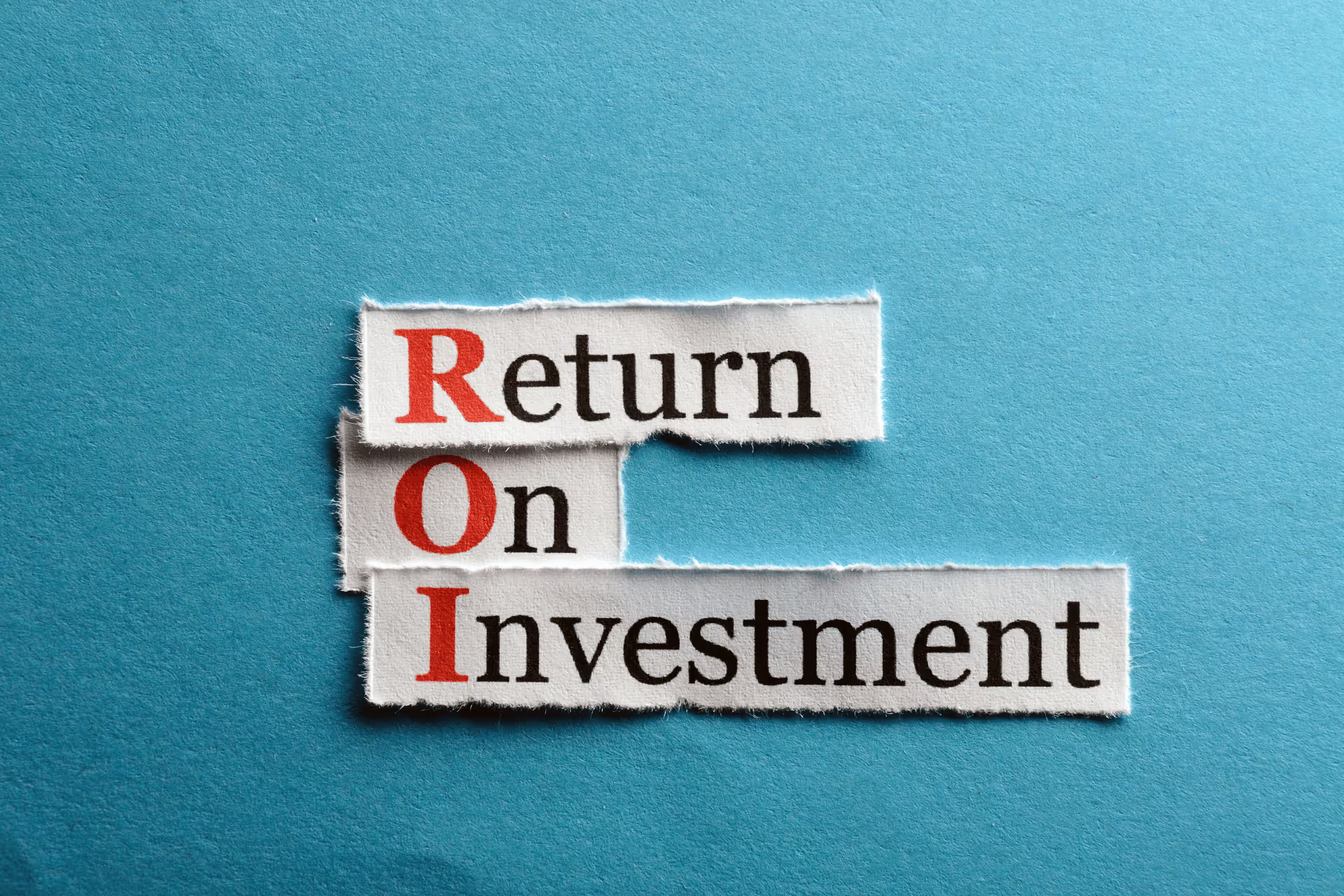
13 Ways to Prove Return on Investment for Mystery Shopping
When considering mystery shopping for your business, you may ask yourself: How is this benefiting my bottom line? How will I know my customers are noticing a difference? Fortunately, the return on investment for mystery shopping can be identified through two functions of your business. These functions are Customer Lifetime Value and customer spending behaviors.
1. Measure Customer Lifetime Value
Customer Lifetime Value is the total monetary value of a unique customer's lifetime business with your brand. It can be broken down into monetary terms. For example, if a customer's average purchase amount is $50 per visit and the top 20% of your customer base visits twice per month, that is 24 x $50 = $1,200 per year. If that customer visits over a 10-year period, the CLV of that customer is $12,000.
2. Interpret Customer Lifetime Value as Customer Loyalty
Your customer lifetime value is determined by a customer's level of loyalty. If a customer frequently returns to your establishment, it can be assumed that they have had a positive experience with your business and product. For example, if a customer finds a fly in their soup, the customer is most likely not going to take another bite. The soup has lost the trust of that consumer. The same can be said for returning customers. If a customer has a negative experience associated with your business or product, they are not going to return until that trust is earned again with quality customer service.
3. Focus on Quality Customer Service
Quality customer service and loyalty pay off. Blake Morgan, a senior contributor to Forbes, reports staggering numbers that clearly show customer service pays off for companies that invest in it, citing, "Customer-centric companies are 60% more profitable than companies that don't focus on customers. Brands with superior customer experience bring in 5.7 times more revenue than competitors that lag in customer experience. 84% of companies that work to improve their customer experience report an increase in their revenue."
4. Don't Skimp on Customer Service Budgets
It is vital to be on the offensive with customer experience. Morgan continues, "...unhappy customers cost more to serve because they require more time and resources to build goodwill. Instead of spending money to recover from a bad experience, proactively spending money to create positive experiences pays off incredibly." Clear communication with your customers and high-quality service are the keys to building these positive relationships. Directing funds toward establishing these avenues is crucial.
5. Monitor Social Media for Great Reviews
There is evidence that taking proactive measures like mystery shops can even help with clients' social media pages--the most common place for customer-business communication. Lisa Kacena-Grell, National Sales Executive at A Closer Look, discussed that "...there is a direct correlation between their clients' mystery shop scores and social media. As they see their scores improve, so do their online reviews. The more positive things said on social media--obviously the better--the more likely people are to return to their favorite locations and the more likely they'll recommend the location to their friends and family." Positive reviews and recommendations are always the goals for any business because they reflect not only successful procedures but also customer loyalty and the likelihood that customers will recommend the business.
6. Hire Mystery Shoppers
Mystery shopping is your answer to knowing whether your customer service practices are building customer loyalty. If you are unsure if you have loyal or frequently returning customers, it may be time to assess your business practices to optimize every interaction. With mystery shopping, your business will be assessed through confidential shops to gain vital information to improve your services and build customer loyalty.
For example, a restaurant has noticed a lack of returning customers. It implements a mystery shop from one of A Closer Look's qualified independent mystery shoppers. Through the customer perspective shop, it is discovered that the staff has a great handle on upselling the product. However, the restaurant needs more training on the latest health and sanitation procedures. Bingo.
7. Identify Opportunities From Your Mystery Shop Reports
Mystery shopping helps businesses identify problems through its proprietary reporting platform, which helps improve upselling techniques and training procedures. Building off the last point, the restaurant now has discreet and unbiased information from the mystery shop. But the partnership does not end there. A Closer Look helps the business identify problems through its reporting platform. The restaurant can reward its employees for proper upselling techniques and make necessary adjustments to its training procedures to ensure proper training on health and hygiene.
8. Look for Ways to Improve Company Culture
In addition to the discreet evaluation and competitor assessments, clients may opt to receive valuable feedback from current and prospective customers after their virtual visit or transaction. Using an economical texting platform, prospects and customers will be prompted to submit a quick and accessible satisfaction survey about their interaction with the facility and virtual sales process.
9. Identify Customer Spending Behaviors and Upsell
The second function of the ROI of mystery shopping is customer spending behaviors.
Karen O'Leary, Director of Client Relations with A Closer Look, describes customer spending behaviors as, "ensuring there is a dollar value attached to certain consumer behaviors." A good example of this is upselling the dessert course at a restaurant. During your visit, your server might use suggestive selling to make certain recommendations. The server might recommend the "house-made cheesecake with decadent ganache" before presenting your check. This suggestion will improve your customer experience because who doesn't love a sweet treat after their meal? If done with belief in the quality of the product and with authenticity, it will also incrementally increase revenue. The result is the customer feels taken care of with personalized service, and revenue is increased. Upselling and suggestive selling are imperative to businesses. The more they occur, the more opportunity there is to increase revenue.
Lisa Kacena-Grell noted this scenario with one of her clients, who was "...amazed by the results by what he calls his 'profit questions.' These are questions that staff would ask consistently like, 'Would you like to add our house side salad?' or, 'Would you like to add the pecan pie?' He has seen a significant increase in guests saying 'yes.'" When this method is put into action, Kacena-Grell calculated that, "Of the 100 guests a day, when 10 people add an additional item to their check, they'll see an increase of $60 per day. Take that number times 30 days and then by 12 months, they'll see an increased profit of over $21,000. At just this one location! This company has almost 200 locations..." This is a huge win for the company just through mystery shopping its business.
10. Think Outside the Box
Mystery shopping is not limited to on-site, brick-and-mortar retailers and restaurants. It can also be used for virtual visits for senior living facilities, apartment complexes, self-storage, and hotels by assessing a prospective customer's ability to seek and gather information on the business without having to commit to an on-site visit. The smoother the virtual visit, the more trust a customer will feel with that business.
11. Compare Yourself to Competitors
One aspect of A Closer Look's Mystery Shopping Solution is its invaluable ability to compare business operations with competitors. With this solution, businesses can collect competitive pricing information and learn about their competitors' quality and service differentiators. This helps your business stand out and drive new customers to your product.
12. Turn Mystery Shoppers Into Loyal Customers
There is evidence that mystery shopping pays for itself over time. According to A Closer Look's polling of over 2,000 independent shoppers, "84% of evaluators said they returned to the businesses they learned about through shopping for A Closer Look. Over half of these evaluators visit at least two to three additional times annually, at their own expense, and spend upwards of $50 or more per visit." This is a great return and a quality way to use grassroots marketing to promote your business.
13. Encourage Referrals to Friends and Family
Mystery shopping not only helps businesses improve their customer experience and increase customer loyalty, but it can also lead to valuable word-of-mouth marketing. When mystery shoppers have a positive experience with a brand during their evaluation, they are more likely to share their experience with friends and family. This organic form of referral marketing can be incredibly powerful, as people tend to trust recommendations from those they know. By providing an exceptional experience to mystery shoppers, businesses can tap into this valuable referral network, attracting new customers who are more likely to become loyal patrons themselves. The ripple effect of positive word-of-mouth can significantly contribute to the return on investment of mystery shopping.
The return on investment of mystery shopping can be calculated. It helps you assess your business, become aware of your customers' experiences, optimize training, build loyalty, and increase profitability. Through your Customer Lifetime Value and customers' spending behaviors, a business can decide whether mystery shopping is right for them. But don't take our word for it--try it for yourself. Request a free mystery shop for your business.

.svg)
.svg)

.svg)
.svg)


